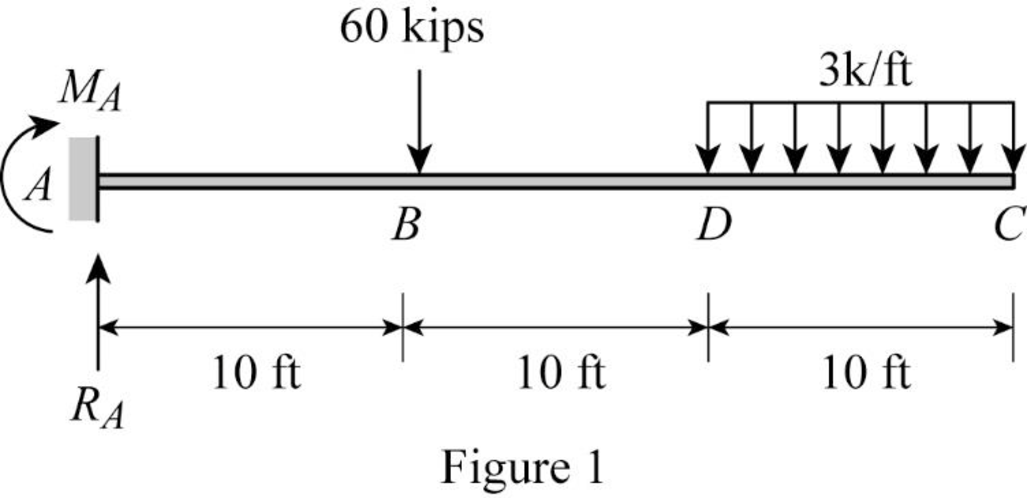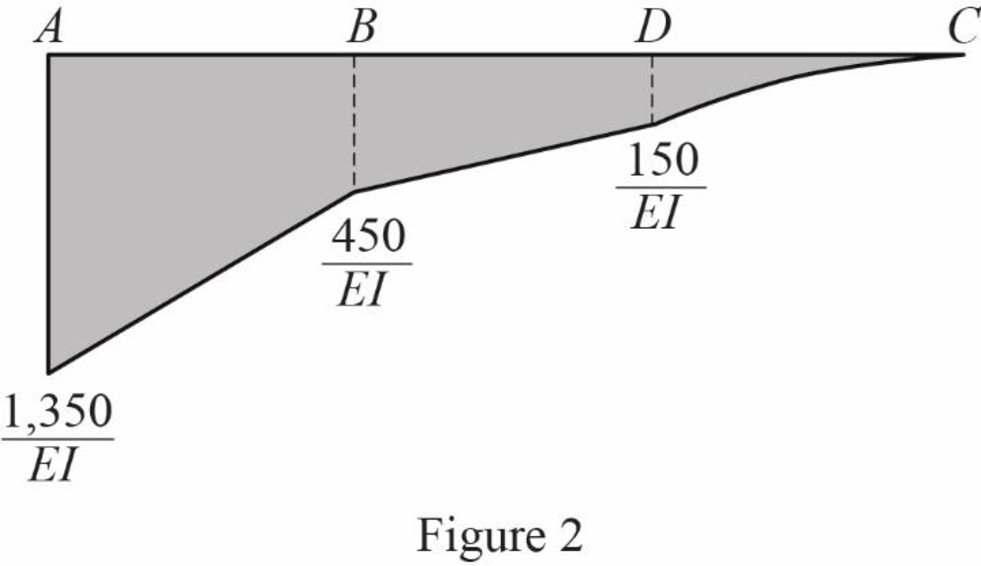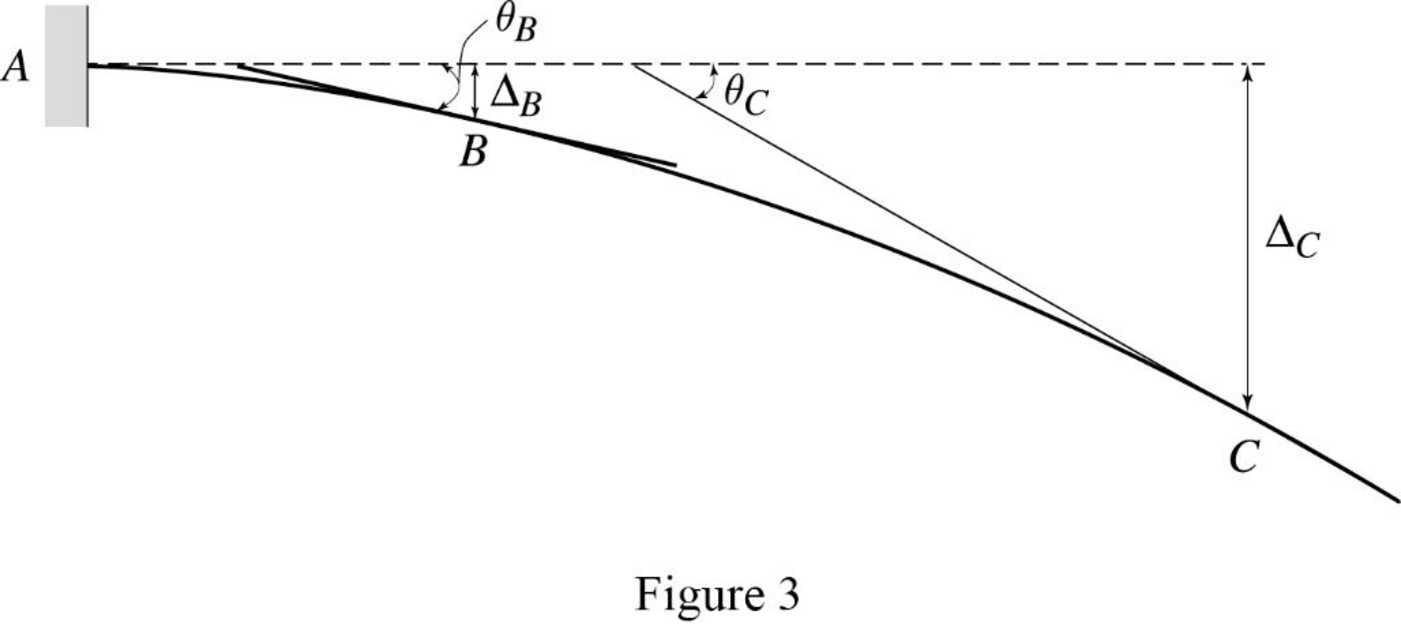
Concept explainers
Find the slope
Answer to Problem 16P
The slope at point B of the given beam using the direct moment-area method is
The deflection at point B of the given beam using the direct moment-area method is
The slope at point C of the given beam using the direct moment-area method is
The deflection at point C of the given beam using the direct moment-area method is
Explanation of Solution
Given information:
The Young’s modulus (E) is 29,000 ksi.
The moment of inertia (I) is
Calculation:
Consider flexural rigidity EI of the beam is constant.
Show the free body diagram of the given beam as in Figure (1).

Refer Figure 1,
Consider upward is positive and downward is negative.
Consider clockwise is negative and counterclowise is positive.
Since support C is a free end there is no reaction.
Determine the bending moment at A;
Determine the bending moment at B;
Determine the moment at D;
Determine the bending moment at C;
Show the

Elastic curve:
The sign of
Show the elastic curve diagram as in Figure (3).

The slope at point B can be calculated by evaluating the change in slope between A and B.
Express the change in slope using the first moment-area theorem as follows:
Here, b is the width of the respective triangle and rectangle and h is the height of the respective triangle and rectangle.
Substitute 10 ft for b,
Determine the slope at B using the relation;
Substitute
Hence, the slope at point B is
The deflection of B with respect to the undeforemd axis of the beam is equal to the tangential deviation of B from the tangent at A.
Express the deflection at B using the second moment-area theorem as follows:
Substitute 10 ft for b,
Determine the deflection at B using the relation;
Substitute
Hence, the deflection at B is
Express the change in slope using the first moment-area theorem as follows:
Here, b is the width and h is the height of the rectangle, triangle, and parabola.
Substitute
Determine the slope at C using the relation;
Substitute
Hence, the slope at point C is
The deflection of C with respect to the undeforemd axis of the beam is equal to the tangential deviation of C from the tangent at A.
Express the deflection at C using the second moment-area theorem as follows:
Determine the deflection at C using the relation;
Substitute
Hence, the deflection at C is
Want to see more full solutions like this?
Chapter 6 Solutions
Structural Analysis
